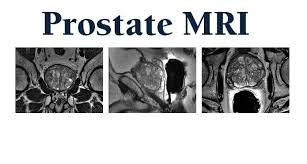The combination of anatomic, biologic and functional dynamic information offered by multi-parametric MRI promises to make it successful imaging tool for improving many aspects of prostatic lesions detection and characterization. There is a real need for clinicians to base therapeutic decisions not only on predictive methods and nomograms that include PSA, digital rectal examination (DRE) findings, and trans-rectal ultrasound (TRUS) biopsy findings, but also on imaging.Multi-parametricMRI, T2W and T1W with MR spectroscopic imaging (MRSI), diffusion-weighted imaging (DWI) and/or dynamic contrast-enhanced MRI (DCE-MRI) provides noninvasive diagnostic tool for detection and characterization of prostatic lesions


